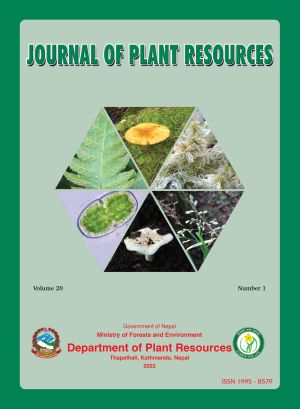Comparative Wood Anatomy of Nepalese Ulmaceae
DOI:
https://doi.org/10.3126/bdpr.v20i01.56598Keywords:
Identification, Tentative key, Ulmiform pattern, Vascular tracheid, Wood characterAbstract
Wood structure of three Nepalese genus Ulmus, Celtis and Trema belonging to the family Ulmaceae are described. Altogether 12 wood samples of these three genus are collected from different localities and studied. The study showed ring porous, semi-ring porous or diffuse porous wood. Transition from early wood to late wood was abrupt in ring porous wood. Early wood pores one to three layered. Late wood pores arrangement in dendritic or ulmiform pattern. Perforation plate is simple and inter-vessel pit alternate. Fiber tracheids, tracheids and libriform fibers were non-perforated tracheal elements while wood parenchymatous cell was apotracheal, marginal and paratracheal. Rays were homo-or heterogeneous. Ulmus differs from Celtis in having ray structure and crystal location. A tentative key is prepared to identify the species based on wood character.




